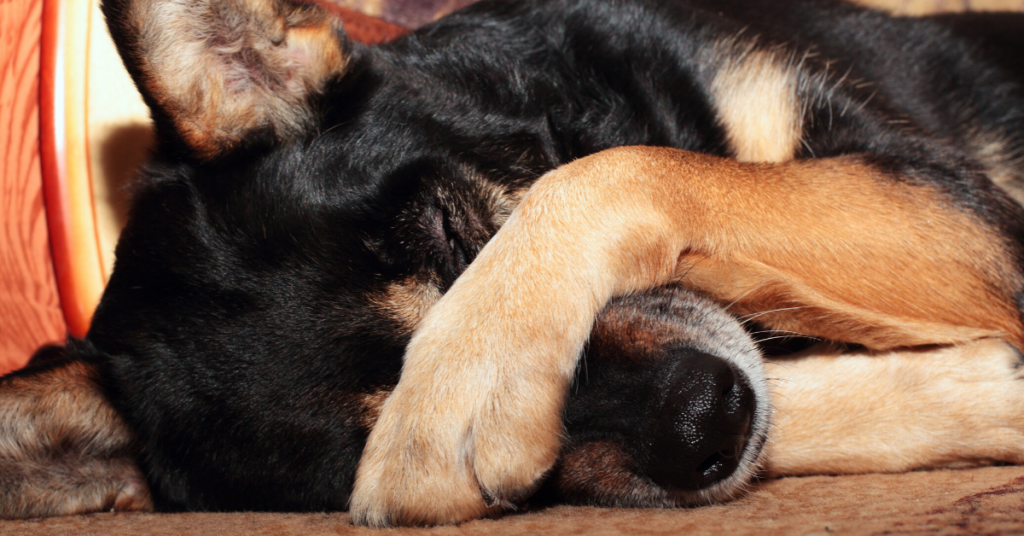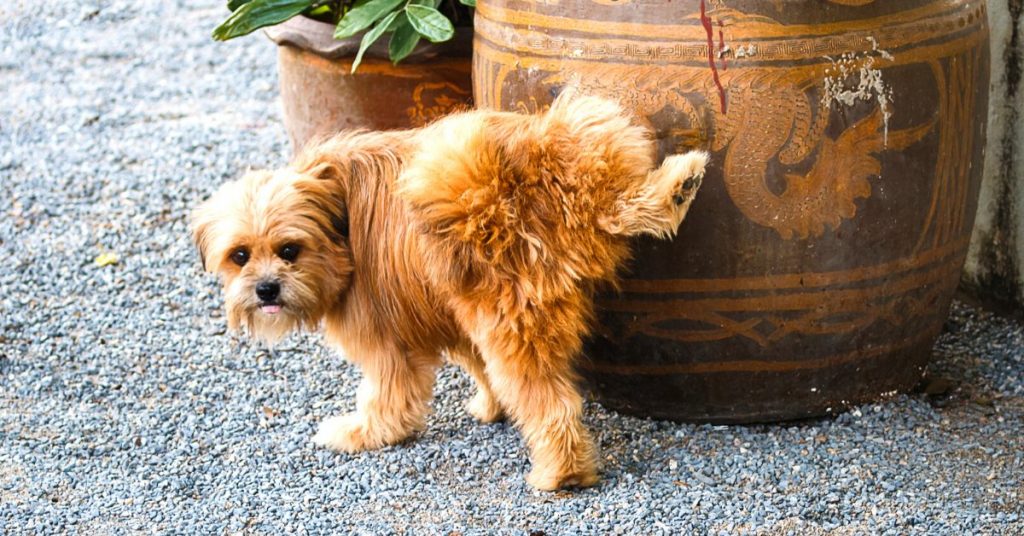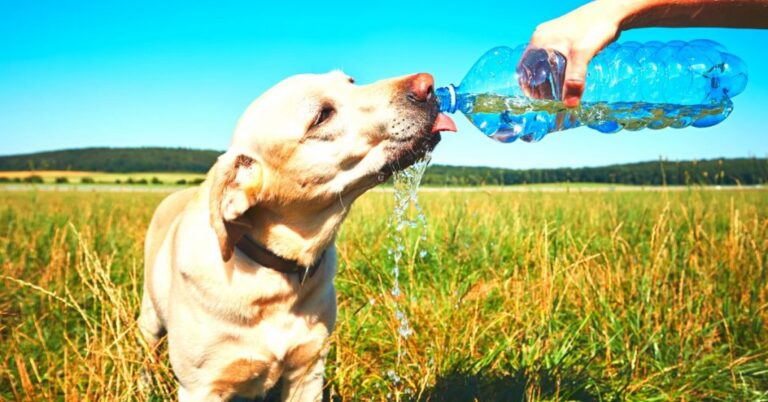Bladder Stones in Dogs (Complete Guide)
Has your dog been urinating bloody urine, or straining to urinate? This might be a sign of bladder stones in dogs.
Bladder stones in dogs can form when minerals cluster together into a mineralized mass. Which is known by vets as Urolith.
The two most common types of bladder stones are struvite stones and calcium oxalate stones.
Other kinds of stones include Gall stones, which form in the gall bladder. Gall stones contain bile salts. There are also kidney stones which are mineralized formations, which form in the kidney.
Neither of these types are directly related to bladder stones, since all stones form as a result of a disease or inflammation in the affected organ.
Below, we will talk more about bladder stones, their clinical signs, causes and how to treat bladder stones in dogs.
What Are Bladder Stones?

Bladder stones (uroliths or cystic calculi) are stone-like clusters of minerals which can develop in the urinary bladder.
The stone sizes can range from sand-like grains to gravel. There may also be a single stone, large one or multiple stones. Usually, it is common to have a mix of small and large stones.
Symptoms of Bladder Stones in Dogs

How can you know if your dog has bladder stones? The most common signs of bladder stones formation are the presence of blood in urine, known as hematuria and straining to urinate (Dysuria), where your dog makes great effort when urinating.
Dogs diagnosed with bladder stones may show signs associated with a lower urinary tract disease, or they might not show any signs at all.
Other symptoms of bladder stones in dogs include:
- Licking the genital area a lot more than usual
- Urinary accidents
- Lower energy or decreased appetite
- Many attempts to urinate without producing much urine
How Are Bladder Stones Formed?

Bladder stones are a mixture of minerals and other materials. Most bladder stones in dogs are made from struvite crystals, calcium oxalate, urate, or cystine crystals.
One of the most common types of bladder stones in dogs are Struvite stones. Struvite is a hard mineral deposit that is formed in urine when magnesium and phosphate stick together.
Struvite stones in dogs are usually formed in urine that’s been infected with ammonium-producing bacteria, this causes the urine pH to rise, which results in the clustering of struvite stones together to form a stone.
The second most common type of bladder stones is calcium oxalate stones. These stones are formed when the dog’s urine is oversaturated with calcium and oxalate.
How quickly can these stones form? Bladder stones can form within a few weeks or may take months. Speed of growth depends on the quantity of crystalline material and the degree of the infection.
Causes of Bladder Stones

The most common cause of the formation of bladder stones in dogs is the presence of high levels of one or more stone-forming crystalline components in the urine.
Dietary factors or having previous diseases in the bladder, especially a bacterial infection, can also be the cause, or in some cases a problem in the body’s metabolism.
When the amount of stone-forming crystalline components exceeds a certain level, the urine becomes saturated and can’t hold any more of the component.
The saturation level depends on two factors, the type of minerals present, and the pH (acidity) of the urine.
Eventually, these components precipitate out of solution and form small crystals. The pointed crystals disturb the bladder lining, causing mucus to be produced. The crystals and mucus attach together, forming clusters that gradually grow and harden into stones.
Diagnosing Bladder Stones

The symptoms of bladder stones are similar to those of a bladder infection or Cystitis. Most dogs who have a bladder infection do not necessarily have bladder stones.
Therefore, in order to diagnose bladder stones, you should visit your vet where he could use palpation through the abdominal wall.
However, some stones are too small to be felt, or the bladder may be too inflamed to allow palpation.
Radiographs X rays or an ultrasound examination can show bladder stones. However, some bladder stones are radiolucent, or not visible on X-rays, because of their mineral composition which doesn’t reflect X-ray beams.
These stones can be detected by a radiographic contrast study, which is a special X-ray technology that uses dye or contrast material to outline the stones.
If the diagnosis is Struvite stones, the vet will recommend dog antibiotics for urinary tract infections and a therapeutic diet which will dissolve the stones.
How to Treat Bladder Stones in Dogs

Generally, there are three main treatment options for bladder stones in dogs. The recommended treatment for your dog will depend on the stone that is present. Consult your vet on the pros and cons of each option and the recommended treatment for your dog.
1. Surgical Removal
This is the fastest way for treating bladder stones in dogs. However, it may not be the best option for dogs who have other health problems.
The stones are removed via cystotomy, a surgical process to access and open the bladder in order to remove the stones. Dogs usually make a quick recovery after this surgery.
If the stones have obstructed the urethra, where the dog can’t urinate, the bladder may rupture. You should Immediately call your nearest emergency clinic to perform the needed surgery and save the dog’s life.
2. Non-surgical removal by Urohydropropulsion
If the diagnosed bladder stones are too small, they can be treated by passing a special catheter into the bladder and then flushing the stones out. Which is a non surgical technique.
If the veterinarian has a cystoscope, small stones can be removed using this device. And avoiding surgical procedures.
These two non surgical processes may be used to collect a sample stone for analysis, so that the vet can decide if dietary dissolution can be a solution.
3. Dietary Dissolution
If you feed your dog a special diet, bladder stones can be dissolved or softened. This therapeutic dietwill be designed for the specific type of stone that is present. The good side of this option is avoiding surgery.
However, this type of treatment may not be successful for all types of stones. It can also be slow and take several weeks or a few months to dissolve a large stone. The risk of urethral obstruction is high during this time.
Not all dogs will be able to eat this special diet. These diets won’t work unless they are fed entirely, which means no treats or supplements can be given while being on this special diet.
4. Ultrasonic Dissolution
This treatment option uses high frequency ultrasound waves, which can break the stones into tiny particles which will be then flushed out of the bladder. Which too avoids the need for surgery.
Ask your vet if this treatment option is available in your area.
When to See a Veterinarian

If you notice your dog having trouble urinating, or producing very small amounts of urine, this means there is a urinary obstruction which is life threatening and requires immediate emergency treatment.
Call your vet when you find your dog straining to urinate or have blood in the urine. The vet will do an X-ray to help determine the type of stone or an ultrasound, urinalysis, and may take a sample of the stone in order to choose the right treatment option for your dog.
Bladder stones can be recurrent, so your vet may recommend an X-ray once or twice a year to monitor your dog. So if new stones form, they can be removed with non-surgical options.
Eventually, if you suspect your dog has bladder stones, it’s better to visit your vet to avoid the development of a complete obstruction which can be life threatening.







